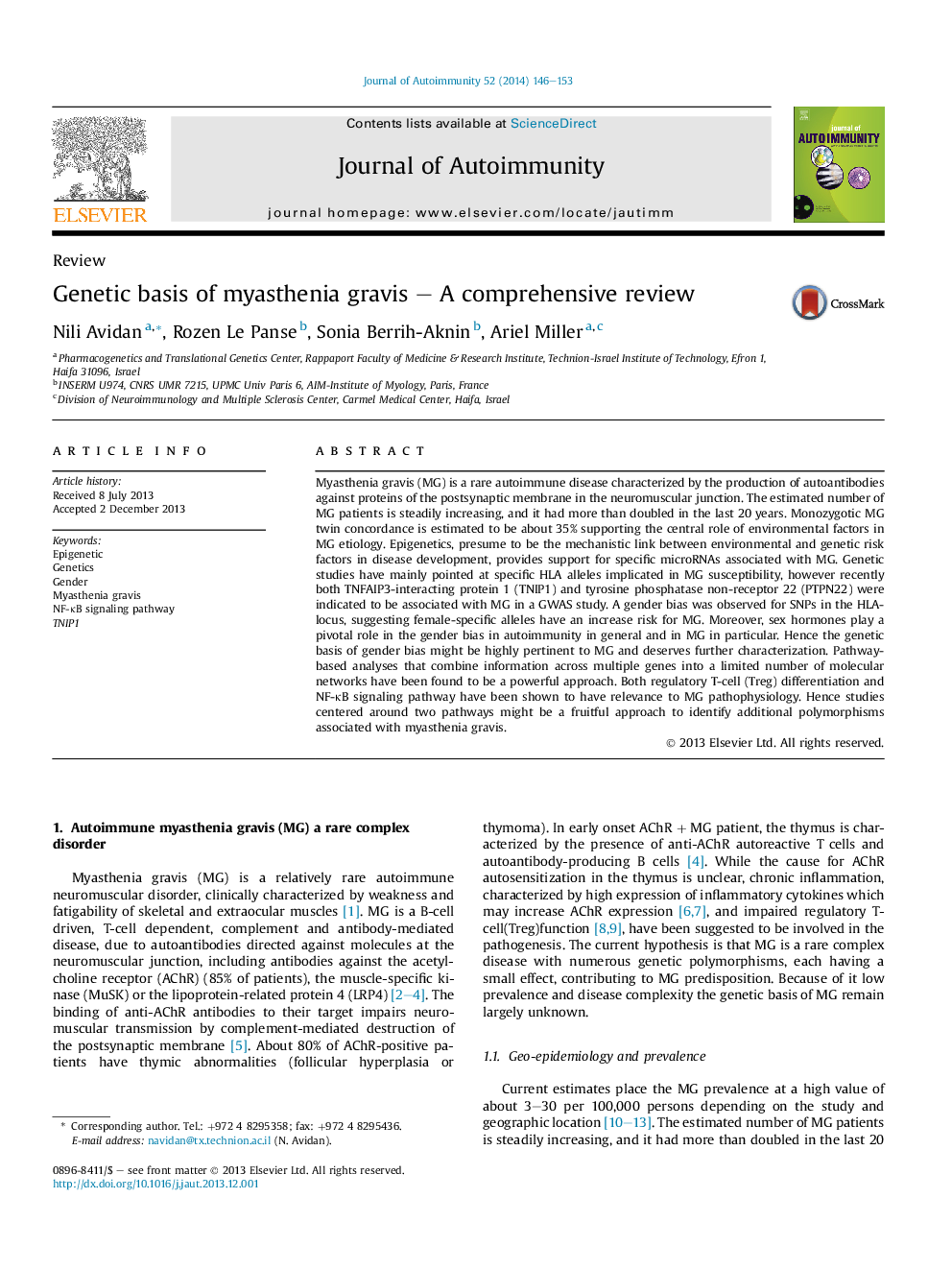| کد مقاله | کد نشریه | سال انتشار | مقاله انگلیسی | نسخه تمام متن |
|---|---|---|---|---|
| 3367772 | 1592297 | 2014 | 8 صفحه PDF | دانلود رایگان |

• MG is a complex disease influenced by both genetic and environmental factors.
• Aberrant microRNA expression suggest that epigenetic modification influence MG risk.
• TNIP1 was recently identified in a GWAS study as a novel gene associated with MG.
• Gender bias might related to estrogen, known to modify innate and adaptive immunity.
• Several genes converging on NF-κB signaling pathway are associated with MG.
Myasthenia gravis (MG) is a rare autoimmune disease characterized by the production of autoantibodies against proteins of the postsynaptic membrane in the neuromuscular junction. The estimated number of MG patients is steadily increasing, and it had more than doubled in the last 20 years. Monozygotic MG twin concordance is estimated to be about 35% supporting the central role of environmental factors in MG etiology. Epigenetics, presume to be the mechanistic link between environmental and genetic risk factors in disease development, provides support for specific microRNAs associated with MG. Genetic studies have mainly pointed at specific HLA alleles implicated in MG susceptibility, however recently both TNFAIP3-interacting protein 1 (TNIP1) and tyrosine phosphatase non-receptor 22 (PTPN22) were indicated to be associated with MG in a GWAS study. A gender bias was observed for SNPs in the HLA-locus, suggesting female-specific alleles have an increase risk for MG. Moreover, sex hormones play a pivotal role in the gender bias in autoimmunity in general and in MG in particular. Hence the genetic basis of gender bias might be highly pertinent to MG and deserves further characterization. Pathway-based analyses that combine information across multiple genes into a limited number of molecular networks have been found to be a powerful approach. Both regulatory T-cell (Treg) differentiation and NF-κB signaling pathway have been shown to have relevance to MG pathophysiology. Hence studies centered around two pathways might be a fruitful approach to identify additional polymorphisms associated with myasthenia gravis.
Journal: Journal of Autoimmunity - Volume 52, August 2014, Pages 146–153